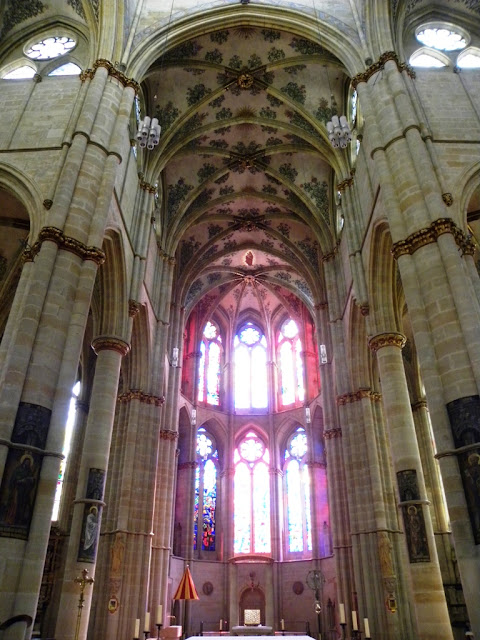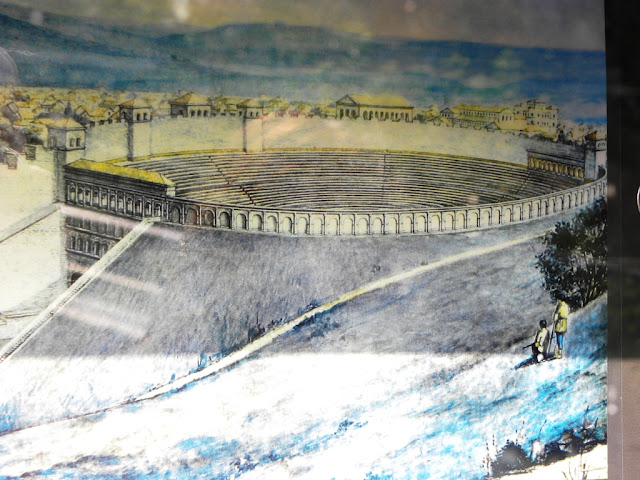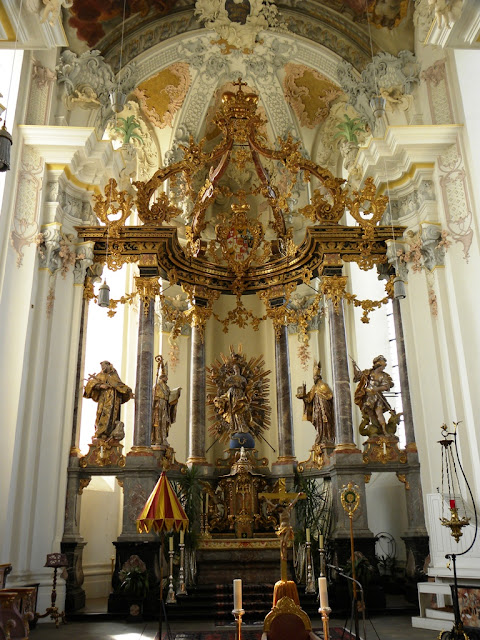When we were visiting Pompeii, Rome and Kusadasi, we were confronted with the culture, military power and cruelness of the Roman Empire. In Trier we find all these elements back in the ruins of these almost 2.000 years old buildings. We will start with the most preserved Roman gate, the Porta Nigra. It is still in such a good state because it was used for other purposes during the last 18 centuries. Its role as military gate was changed into church and monastery over time. Now it is a historical monument.
Just outside the city centre, you find the Amphitheatre where gladiators were fighting till the death. Now the arena is empty, the walls and the seats are gone. You can still visit the underground terrain with the dungeons. In the summer they sometimes hold outdoor theatre or music events in this Amphitheatre.
On the ring of Trier you find the ruins of the Roman Kaiserthermen. Like in all major Roman Empire cities, the men gathered in these establishments to discuss business and keep there body in good physical health. These type of complexes were used for bathing, sports, business and massages. The water was heated up to a temperature of 40 degrees just like the Onse in Japan. It is hard to imagine that this was all possible 2000 years ago.
Bij ons bezoek aan Pompeii, Rome en Kusadasi, werden we geconfronteerd met de cultuur, militaire macht en wreedheid van het Romeinse Rijk. In Trier hebben we al deze elementen terug gevonden in de ruïnes van de bijna 2.000 jaar oude gebouwen. We beginnen ons artikel bij de meest intact gebleven Romeinse stadspoort Porta Nigra. Deze is nog in zo’n goede staat daar ze gedurende de eeuwen ook voor andere doeleinden is gebruikt. Na haar militaire rol werd het een kerk en klooster. Nu is het een historisch monument.
Juist buiten het stadscentrum vind je het Amfitheater waar de gladiatoren vochten op leven en dood. Nu is de arena leeg, de muren en toeschouwersplaatsen verwijderd. Je kan nog steeds het ondergrondse terrein bezoeken met de kerkers. In de zomer worden hier nog toneel en muziek voorstellingen gehouden in open lucht.
Op de stadsring van Trier liggen de ruïnes van de Romeinse Keizerbaden. Zoals in alle grootsteden van het Romeinse Rijk kwamen hier de mannen samen om zaken te doen en hun lichaam gezond te houden. Deze badhuizen werden gebruikt voor het baden, sport, zaken en massages. Het water werd verwarmd tot ongeveer 40 graden net zoals de Onse in Japan. Het is moeilijk te geloven dat dit reeds mogelijk was 2.000 jaar geleden..
Previous Trier article: Unbelievable paintings on the ceiling of the St. Paulin cathedral in Trier
Previous Roman Empire article:
The ancient town of Ephesus with the library of Celsus
Return to main page



















































